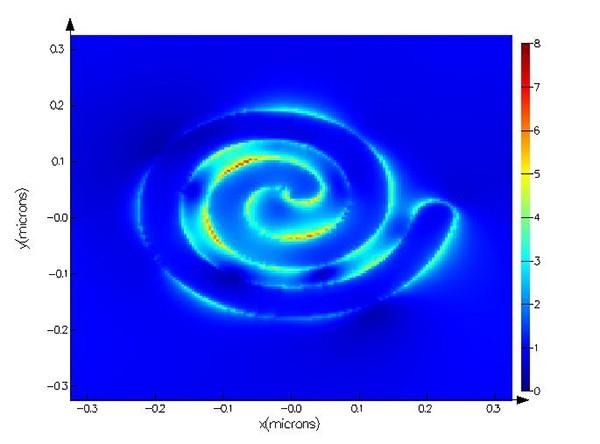Nano-Spirals May Bring On Unbreakable, Unfakeable Security Scans
Students and faculty at Vanderbilt University have fabricated arrays of ultra-tiny spirals that may well be the key to card-based security. This team of researchers created spirals that are around six million times smaller than a dime, recording data about them then with ultrafast lasers at both Vanderbilt and the Pacific Northwest National Laboratory in Richland, Washington. What they discovered was a number of unique properties that would be perfect for digital security measures on physical objects. Identification cards, credit cards, and security cards of all sorts could be improved by these micro-spirals.
According to the researchers on this project, the planar Archimedean nanospiral has big potential in the nanoscale antennas arena. As they suggest in their paper, "these experiments show that the intrinsic asymmetry of the nanospirals results in a highly efficient, two-dimensional harmonic generator that can be incorporated into metasurface optics."
How small is a nano-spiral?
One square array with 100 nano-spirals inside comes out to less than a hundredth of a millimeter on one side.
So what's the big deal, other than miniature scale?
Reactions to light and scans. When an array of nano-spirals is lit with a laser light, they emit a visible blue light. Nano-spirals produce four times more blue light per unit volume than the previous record holder for such a task, synthetic crystal beta barium borate.
And nano-spirals have a much better name, so there's that too.

Above you're seeing the laser light hitting these tiny spirals.
1. Light is absorbed by electrons in the spiral.
2. The spiral's arms are so tiny, electrons move toward the center.
3. Electrons driven toward the center absorb energy.
4. Some electrons have absorbed enough energy that they emit blue light at double the frequency of incoming infrared laser light.
"This is similar to what happens with a violin string when it is bowed vigorously", said director of research Stevenson Professor of Physics Richard Haglund.
"If you bow a violin string very lightly it produces a single tone. But, if you bow it vigorously, it also begins producing higher harmonics, or overtones."
"The electrons at the center of the spirals are driven pretty vigorously by the laser's electric field. The blue light is exactly an octave higher than the infrared – the second harmonic."
These super miniature spirals are made with precious metals, like gold, resistant to degradation. Because the required array of nano-spirals is so small, cost of materials is extremely low.
Lead author on this project Roderick B. Davidson II has experimented using scanning electron-beam lithography to apply nano-spirals made of gold on several materials – glass substrate included.
Because of the frequency doubling effect described here, arrays need not be large. They could be small enough that the naked eye couldn't – or could barely – see them at all.
Imagine these laser-read squares of spirals applied to all precious cargo: never again a lost piece of material in transit.
Imagine these arrays applied to ID materials: scans with a more secure – and longer lasting – identification on equipment of all sorts.
This paper can be found in De Gruyter under title "Eflcient forward second-harmonic generation from planar archimedean nanospirals". Authors include Roderick B. Davidson II, Jed I. Ziegler, Guillermo Vargas, Sergey M. Avanesyan, Yu Gong, Wayne Hess, and Richard F. Haglund Jr.
